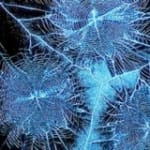 The KRONOS Group has been one of the leading manufacturers of titanium dioxide pigments and TiO2 specialities for more than 90 years. The latest and most noteworthy developments include the KRONOClean line of KRONOS photocatalysts, e.g. KRONOClean 7000. The titanium dioxide-based photocatalyst allows targeted degradation of pollutants into harmless substances, such as carbon dioxide and water. Thanks to specific modification, it is characterised by a maximised efficacy window and even works in closed rooms or diffuse light. The applications range from coatings of all kinds, textiles and plastic films, all the way to cement, as well as use wherever the high specific surface area and the superhydrophilicity of the product are of advantage.
The KRONOS Group has been one of the leading manufacturers of titanium dioxide pigments and TiO2 specialities for more than 90 years. The latest and most noteworthy developments include the KRONOClean line of KRONOS photocatalysts, e.g. KRONOClean 7000. The titanium dioxide-based photocatalyst allows targeted degradation of pollutants into harmless substances, such as carbon dioxide and water. Thanks to specific modification, it is characterised by a maximised efficacy window and even works in closed rooms or diffuse light. The applications range from coatings of all kinds, textiles and plastic films, all the way to cement, as well as use wherever the high specific surface area and the superhydrophilicity of the product are of advantage.The innovative products set to work precisely where conventional photocatalysts fail because of their much smaller efficacy window. "So, they even work behind glass, in normal indoor lighting, in twilight or in scattered light," explains Dr. Stephan P. Blöss, Technical Product Manager at KRONOS INTERNATIONAL, Inc. The range of degradable substances is equally large. Extensive series of tests have proven the efficacy of the products against numerous everyday odours and pollutants, stains and soiling: nicotine, tar, ammonia, amines, aldehydes (e.g. formaldehyde) and alcohols. Phenols and other aromatic compounds are degraded by KRONOClean 7000 just as effectively as toxic nitrogen oxides and carbon monoxide.
Titanium dioxide, the all-rounder – Properties and mode of action
At the concentration generally required, the pale-beige powder has virtually no colouring properties. To be optimally effective, all KRONOClean 7000 needs is light and air, as well as direct contact with the pollutants. The photocatalyst should preferably be immobilised on a matrix surface, or embedded in transparent, porous structures. It owes its efficiency to the crystallites, which are roughly 15 nanometres in size and – when agglomerated in the powder – are responsible for the large specific surface area of roughly 250 square metres per gram. Also of fundamental importance for the product's efficacy is the quality of dispersion in the system in which it is used, and thus the quality of milling and stabilisation of the particles in the carrier substance. Highly reactive, inorganic radicals are formed from ambient moisture and atmospheric oxygen in the course of the photocatalytic cycle. These radicals can subsequently oxidise organic compounds, e.g. aromatic and aliphatic compounds, or mineralise inorganic molecules, such as nitrogen oxides and carbon monoxide.
Different types are currently available: KRONOClean 7000, for example, is active in visible light and optimised in terms of photoactivity; KRONOClean 7050 is specifically tuned to be photoactive in UV radiation. "Of course, we're constantly working on further improving these versatile products. After all, as the ultimate cleaning agent of the future, titanium dioxide could additionally make a significant contribution to climate protection," adds Blöss in conclusion.



